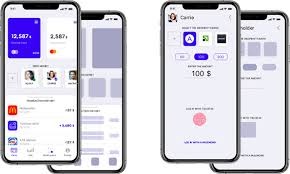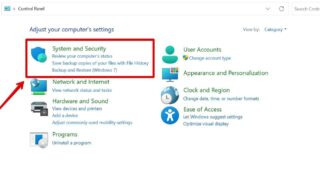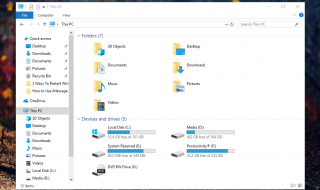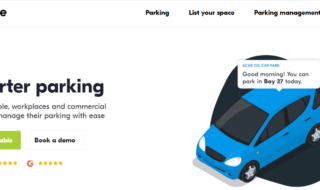To grow your business, you need to be able to connect with your audience. This can be tricky when the average person’s attention span is just a few seconds long. Earning — and holding — your target audience’s attention is a skill that is often only learned after much trial and error.
One key to improving your customer outreach and response is learning what your typical customer is like. Once you understand their lifestyle habits, demographics, and spending preferences, you can create content they actually care about. Instead of pushing your marketing efforts on them, you can craft content that naturally draws them in. Here are five strategies for improving your outreach and meeting your audience where they are.
Contents
1. Respect Privacy Wishes
Before you can create targeted content, you need to understand the intricacies of your audience. Using cookies on your website is one way to learn more about their shopping mannerisms, interests, and personalities. Unfortunately, more website visitors are choosing to opt out of cookies. This can pose a challenge for businesses that want to learn more about their target audience. If your customers tend to opt out of tracking cookies, you can still glean pertinent insights into their behaviors.
Predictive audiences are an excellent alternative to cookie-based tracking. Predictive analytics help you build targeted audience groups so you can cater your marketing efforts to them. Modern technology makes it possible to predict future customer actions, such as buying a product or requesting removal from an email list. You could use predictive analytics to figure out which customers are likely to buy something from you within the next week. Then, you can dedicate your outreach efforts to that group instead of wasting your efforts on an audience that’s unlikely to buy.
2. Be Accommodating, Not Pushy
Remember, you’re there to meet your customers’ needs — not the other way around. Many businesses chase potential customers away by pushing their wares on them like an over-eager door-to-door salesperson. No one wants to face a cumbersome checkout process interrupted by constant popups or a never-ending stream of “but wait … there’s more!” offers.
To meet your audience where they are, think about how you can make your website more user-friendly. Consider scheduling a UX analysis to make sure site visitors have the best possible user experience. Be prepared to make website structure and layout changes as needed to accommodate your customers’ needs and expectations. Focus on the checkout process to ensure it’s smooth, easy to complete, and unencumbered by unnecessary steps. Don’t make customers decline hordes of offers before they can complete a purchase.
3. Save Your Customers’ Carts
 Some people need to contemplate new purchases for a while before commiting to buy. If someone leaves their digital cart unattended for a few hours or even a few days, it doesn’t necessarily mean they’re gone for good. They may come back after doing some comparison shopping or waiting for their next paycheck. However, if their cart is gone when they return, they probably won’t go to the effort of tracking down their abandoned items again.
Some people need to contemplate new purchases for a while before commiting to buy. If someone leaves their digital cart unattended for a few hours or even a few days, it doesn’t necessarily mean they’re gone for good. They may come back after doing some comparison shopping or waiting for their next paycheck. However, if their cart is gone when they return, they probably won’t go to the effort of tracking down their abandoned items again.
When you allow customers to save their carts, you give them more power over their shopping experience. This simple feature shows customers you care about their convenience and want to give them greater checkout flexibility. To improve abandoned cart recovery rates, consider automating an abandoned cart email or text message after a certain time period. You might offer a limited-time discount if the customer returns to their abandoned cart and makes a purchase.
4. Hang Out Where They Do
One of the best ways to reach your audience where they are is by hanging out where they are. For the vast majority of audience segments, this is on social media. Different demographics tend to gravitate to specific platforms. That means you’ll need to do some research to make sure you show up to the right party. You’ll also want to tailor your posts to the ages and demographics of the people most likely to use each platform.
For example, 78% of young adults between the ages of 18 and 29 in the United States use Instagram. However, just 15% of adults aged 65 and over use this platform. Older adults are more likely than young adults to spend time on Facebook. All age groups tend to use YouTube about equally. With this information, you can decide which platforms are most worth your marketing efforts based on your target audience.
5. Engage With Current and Potential Customers
Don’t just post closed-ended announcements or statements. Instead, invite conversation and feedback by asking open-ended questions and opinions. Make sure you don’t neglect one audience in favor of another. If you’re constantly engaging with only potential customers, your loyal customers may feel ignored and undervalued.
Avoid making anyone feel slighted by ensuring both current and potential customers feel engaged. Invite feedback through emails and on social media platforms to let loyal customers know you’re willing to make changes to improve their experience. Ask potential customers what makes them choose one company or one product over another. Respond to comments whenever possible to nurture the customer-business relationship.
Your customers should never feel like they have to come to you to get what they want. You don’t want to be overbearing, but make the effort to meet them where they are. Use these tips to guide your outreach efforts and make every customer feel like they’re your favorite.



